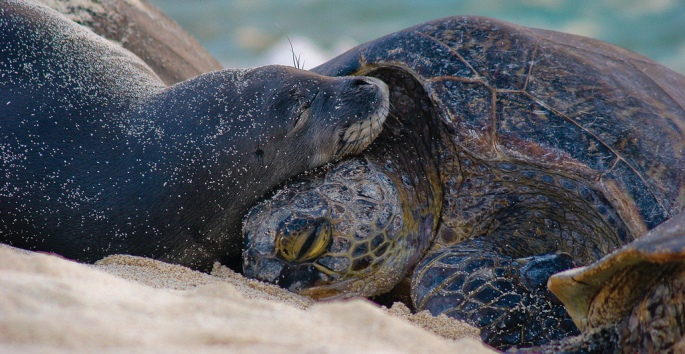
How science is forcing us to reconsider the twin myths of human superiority and dumb creatures
Human beings are the most intelligent, and therefore important, of all the world´s species, right? We deserve our superior status over other animals because of the following scientific truths: that only humans are self-aware and feel empathy, that we are unique in our abilities to use language and tools, that only we can recognize ourselves in a mirror and understand the passing of time.
But advances in cognitive ethology (the scientific study of animal intelligence, emotions, behaviors, and social life) have now disproved these ´truths´, showing that many other creatures also display a complex range of emotions, highly evolved communication skills, compassion for others, and even intelligence that rivals- or surpasses- our own. These ground-breaking studies force us to ask some uncomfortable questions about our place in the world, and have caused leading experts to call for a radical rethink of the way we treat other animals.
Communicative mice, kindly rats and compassionate chickens
Among the findings are that yes, fish do feel pain , and not only that but acidic water actually makes them nervous. Chickens are not only very intelligent, they can also feel each other´s pain and demonstrate physiological signs of concern and distress at the suffering of their young.
Similar conclusions were drawn in a cruel study of mice who were doused in acid. Not only were the empathic rodents more sensitive to the pain of their peers than to their own agony, but researchers also suggested they “might be talking to each other” about their pain, too. Take a moment to let that sink in….
And while rats don´t have the best of reputations, there is much research to suggest they too are compassionate, communicative and highly intelligent. One group of scientists found that, given the choice, rats prefer to free others from a cage rather than help themselves to candy. What´s more, the rats had not been taught to open the cages in advance. Researcher Peggy Mason noted: “That was very compelling … It said to us that essentially helping their cagemate is on a par with chocolate. He can hog the entire chocolate stash if he wanted to, and he does not. We were shocked.”
Continue reading “Everything You Think You Know About Animals Is Wrong”



